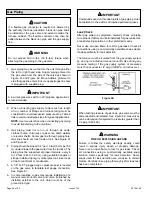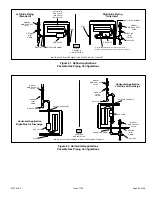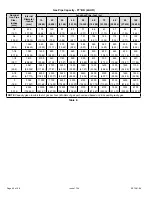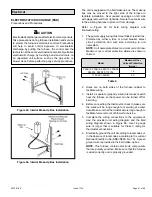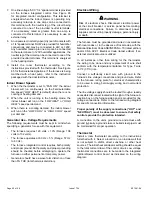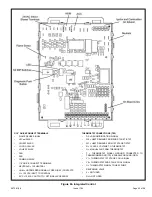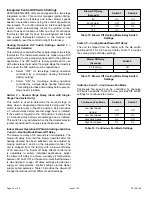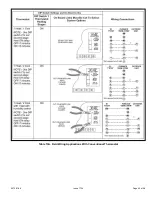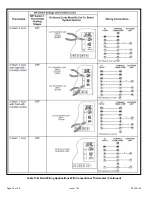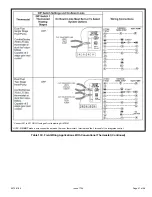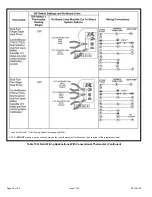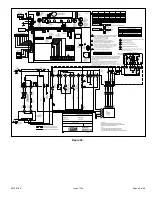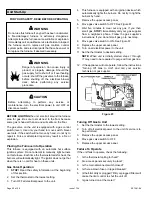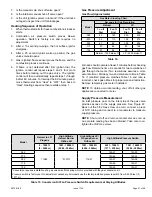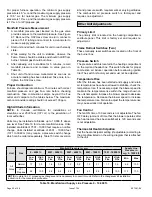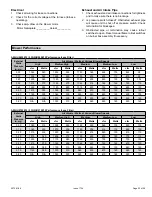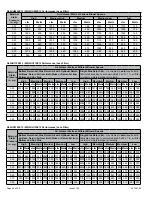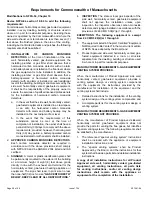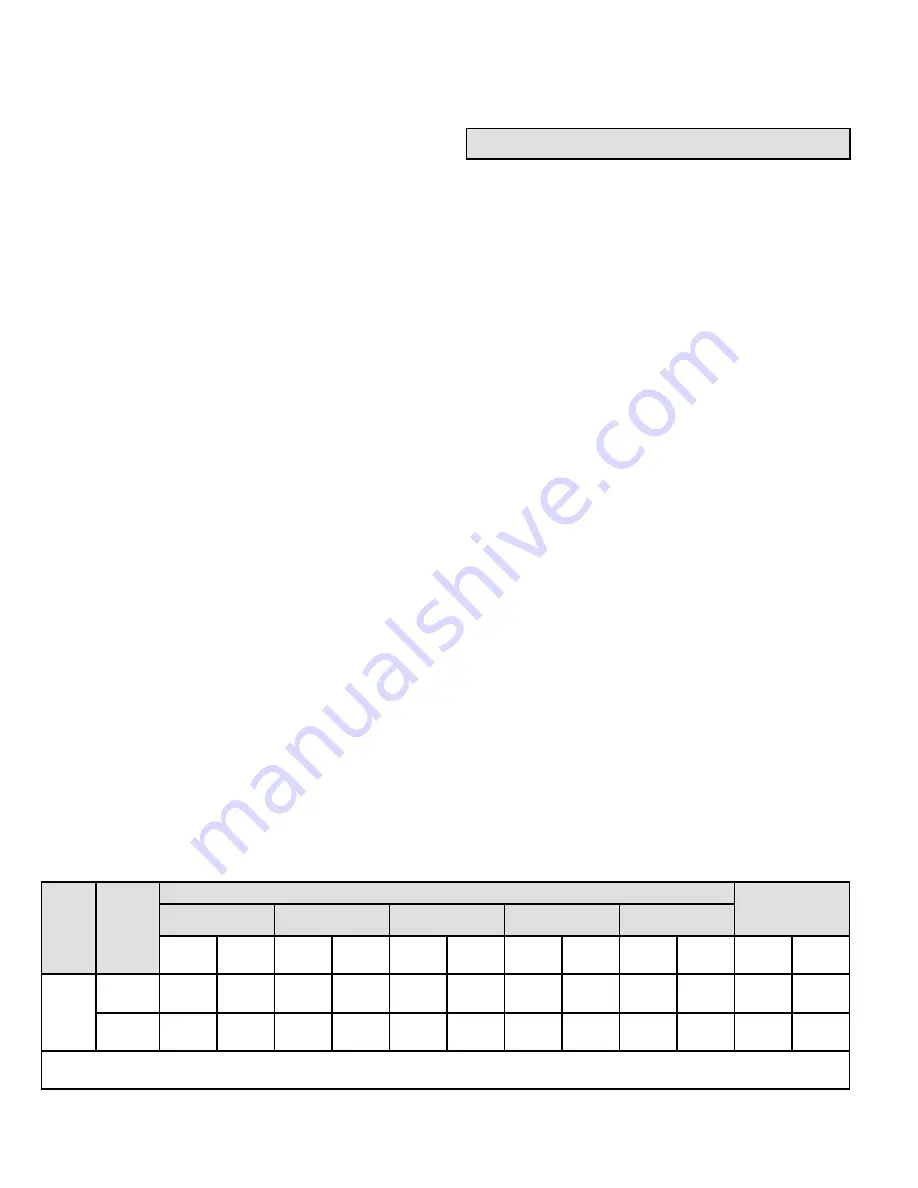
507281-06
Page 52 of 58
Issue 1724
Unit
Gas
Manifold Pressure in. w.g.
Supply Line
Pressure in.
w.g. 0 - 10000 ft.
0 - 4500 ft.
4501 - 5500 ft.
5501 - 6500 ft.
6501 - 7500 ft.
7501 - 10000 ft.
Low
Fire
High
Fire
Low
Fire
High
Fire
Low
Fire
High
Fire
Low
Fire
High
Fire
Low
Fire
High
Fire
Min
Max
All
Sizes
Natural
1.7
3.5
1.6
3.3
1.5
3.2
1.5
3.1
1.7
3.5
4.5
13.0
LP /
Propane
4.9
10.0
4.6
9.4
4.4
9.1
4.3
8.9
4.9
10.0
11.0
13.0
NOTE
:
A natural to L.P. propane gas changeover kit is necessary to convert this unit. Refer to the changeover kit installation
instruction for the conversion procedure.
Table 16. Manifold and Supply Line Pressure 0 - 10,000 ft.
For proper furnace operation, the minimum gas supply
pressure is 4.5” w.c and the maximum gas supply pressure
is 10.5” w.c for natural gas. The minimum gas supply
pressure is 10” w.c. and the maximum gas supply pressure
is 13” w.c. for LP/propane gas.
Manifold Pressure Measurement
1. A manifold pressure post located on the gas valve
provides access to the manifold pressure. See Figure
67. Back out the 3/32 Hex screw one turn, connect a
piece of 5/16” tubing and connect to a manometer to
measure supply pressure.
2. Start unit and allow 5 minutes for unit to reach steady
state.
3. While waiting for the unit to stabilize, observe the
flame. Flame should be stable and should not lift from
burner. Natural gas should burn blue.
4. After allowing unit to stabilize for 5 minutes, record
manifold pressure and compare to value given in
5. Shut unit off and remove manometer as soon as an
accurate reading has been obtained. Take care to re-
tighten the 3/32 Hex screw.
Proper Combustion
Furnace should operate minimum 15 minutes with correct
manifold pressure and gas flow rate before checking
combustion. Take combustion sample beyond the flue
outlet and compare to the tables below. The maximum
carbon monoxide reading should not exceed 100 ppm.
High Altitude Information
NOTE
:
In Canada, certification for installations at
elevations over 4500 feet (1371 m) is the jurisdiction of
local authorities.
Units may be installed at altitudes up to 10,000 ft. above
sea level. See Table 16 for de-rate manifold values. Units
installed at altitude of 7501 - 10,000 feet require an orifice
change. Units installed at altitude of 4501 - 10,000 feet
(1371 to 3048 m) may require a pressure switch change
which can be ordered separately. Table 15 lists conversion
Other Unit Adjustments
Primary Limit
The primary limit is located on the heating compartment
vestibule panel. This limit is factory set and requires no
adjustment.
Flame Rollout Switches (Two)
These manually reset switches are located on the front of
the burner box.
Pressure Switch
The pressure switch is located in the heating compartment
on the cold end header box. This switch checks for proper
combustion air inducer operation before allowing ignition
trial. The switch is factory set and must not be adjusted.
Temperature Rise
After the furnace has been started and supply and return
air temperatures have been allowed to stabilize, check the
temperature rise. If necessary, adjust the blower speed to
maintain the temperature rise within the range shown on
the unit nameplate. Increase the blower speed to decrease
the temperature. Decrease the blower speed to increase
the temperature rise. Failure to adjust the temperature rise
may cause erratic limit operation.
Fan Control
The fan ON time of 30 seconds is not adjustable. The fan
OFF delay (amount of time that the blower operates after
the heat demand has been satisfied) is 120 seconds and
is not adjustable.
Thermostat Heat Anticipation
Set the heat anticipator setting (if adjustable) according to
the amp draw listed on the wiring diagram that is attached
to the unit.
kit and pressure switch requirements at varying altitudes.
The combustion air pressure switch is factory-set and
requires no adjustment.

